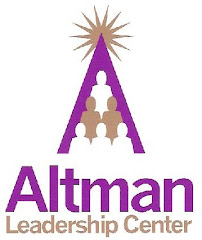Last week I had the pleasure of spending an evening with friends, both new and old, in support of FORCE (Facing Our Risk of Cancer Empowered). I was invited to the benefit by an incredible woman I met in my acting class. A beautiful, talented, vivacious woman who has shown she is made of iron.
As an organization, FORCE’s mission is to help women find out if they are at a higher risk for breast and ovarian cancers due to genetic risk factors. They also help provide information about the medical options for women living with this higher risk, and provide support for both women and their families in the pursuit of these options. They help underserved populations with everything from information to resources such as clinical trials, while promoting research in hereditary cancers.
Hereditary breast cancer is caused primarily by mutations in the BRCA1 and BRCA2 genes. Not all mutations will result in cancer but when each of our copies of our damage repairing genes are damaged then when genes become damaged, cancer can develop. In this case, if a woman knows she has a mutation in the BRCA genes, then she realizes her risk of eventual breast and ovarian cancers rise.
For many women, having this information is certainly frightening and disconcerting, but it is also very empowering. You can’t fight what you don’t know about and in this case information provides these women the opportunity in large measure to take their fate into their own hands. If you have ovarian or breast cancer in your first or second generation family you should at least consult with your doctor about genetic testing.
Due to medical advances, women now have a number of options when faced with this news. If it is determined a woman’s hereditary risk is ovarian cancer then she has several options. One of these options is to take oral contraceptives as this has been shown to lower the risk for ovarian cancer. At the other end of the treatment scale is a “prophylactic oophorectomy” which is the removal of healthy ovaries or she can have a “bilateral salpingo-oophorectomy” (BSO). While some consider these surgeries drastic, they have been shown to be an effective way to lower the cancer risk.
If the genetic risk is determined to be breast cancer, then similar to ovarian cancer risk, there is a spectrum of options. One of these options is close surveillance under which a woman begins self-breast exams at 18 and clinical exams bi-annually at 25. There are also procedures such as MRI and “ductal lavage” that should be discussed with your doctor. While it is possible for men to have breast cancer, even high-risk men are at a lower risk than high-risk women.
The most drastic method of breast cancer prevention is a mastectomy. Today there are many kinds of mastectomies and several options as to reconstruction. Again if you are determined to be at high risk genetically then you should have a conversation, or several conversations with your doctor about these options. You can find further information at www.facingourrisk.org.
Of course, nothing in this column should be thought of as a substitute for professional medical advice. My intent is to pass along the work of a great support group, to start a conversation amongst ourselves and hopefully prompt many conversations between women and their doctors.
Mark Altman is a speaker and leadership consultant with the Altman Leadership Center. He has graduate work in Marriage and Family Counseling and is the author of Leadership For All the Mountains You Climb. He can be reached at mark@leadright.net.








No comments:
Post a Comment